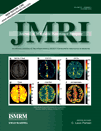Comparison of segmentation methods for MRI measurement of cardiac function in rats
Abstract
Purpose
To establish the accuracy, intra- and inter-observer variabilities of four different segmentation methods for measuring cardiac functional parameters in healthy and infarcted rat hearts.
Materials and Methods
Six Wistar rats were imaged before and after myocardial infarction using an electrocardiogram and respiratory-gated spoiled gradient echo sequence. Blinded and randomized datasets were analyzed by various semi-automatic and manual segmentation methods to compare their measurement bias and variability. In addition, the accuracy of these methods was assessed by comparison with reference measurements acquired from high-resolution three-dimensional (3D) datasets of a heart phantom.
Results
Relative inter- and intra-observer variability were found to be similar for all four methods. Semi-automatic segmentation methods reduced analysis time by up to 70%, while yielding similar measurement bias and variability compared with manual segmentation. Semi-automatic methods were found to underestimate the ejection fraction for healthy hearts compared with manual segmentation while overestimating them in infarcted hearts. However, semi-automatic segmentation of short axis slices agreed better with 3D reference scans of a heart phantom compared with manual segmentation.
Conclusion
Semi-automatic segmentation methods are faster than manual segmentation, while offering a similar intra- and inter-observer variability. However, a potential bias has been observed between healthy and infarcted hearts for different methods, which should also be considered when selecting the most appropriate analysis technique. J. Magn. Reson. Imaging 2010;32:869–877. © 2010 Wiley-Liss, Inc.




